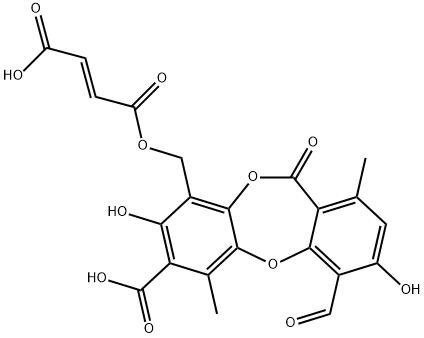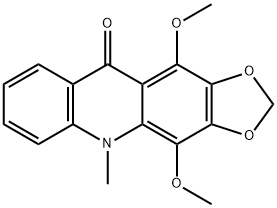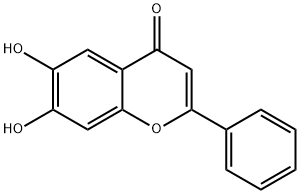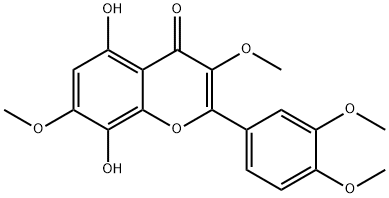2,4,5-TRIHYDROXYBENZALDEHYDE
- CAS NO.:35094-87-2
- Empirical Formula: C7H6O4
- Molecular Weight: 154.12
- MDL number: MFCD00016592
- SAFETY DATA SHEET (SDS)
- Update Date: 2024-04-28 19:50:54

What is 2,4,5-TRIHYDROXYBENZALDEHYDE?
Chemical properties
yellow to brown or khaki crystalline powder
The Uses of 2,4,5-TRIHYDROXYBENZALDEHYDE
2,4,5-Trihydroxybenzaldehyde is a useful reactant for the preparation of bis-?indolylmethanes as a potential for β-?glucuronidase inhibitors.
The Uses of 2,4,5-TRIHYDROXYBENZALDEHYDE
2,4,5-Trihydroxybenzaldehyde may be used in the synthesis of:
- 2,4,5-tribenzyloxybenzaldehyde
- 2,4,5-trihydroxybenzaldehyde N-(diphenylmethylene)hydrazine
- 2-hydroxy-4,5-dimethoxybenzaldehyde
General Description
2,4,5-Trihydroxybenzaldehyde (2,4,5-THBA) is a tri-substituted benzaldehyde that can be prepared from sesamol. Its free radical-quenching ability, antioxidant bioactivity and cytotoxicity have been assessed. 2,4,5-THBA has been identified as one of the components in the ethyl acetate extract of Beta vulgaris var. cicla seeds. The freezing point, boiling point, density and refractive index of 2,4,5-THBA are 499.65K, 510.61K, 1.3725g/cm3 and 1.6400, respectively.
Properties of 2,4,5-TRIHYDROXYBENZALDEHYDE
| Melting point: | 223-225 °C (lit.) |
| Boiling point: | 237.46°C (rough estimate) |
| Density | 1.3725 (rough estimate) |
| refractive index | 1.6400 (estimate) |
| storage temp. | Inert atmosphere,Room Temperature |
| form | Crystalline Powder |
| pka | 7.41±0.23(Predicted) |
| color | Yellow to brown or khaki |
| Sensitive | Air Sensitive |
| BRN | 2250084 |
| CAS DataBase Reference | 35094-87-2(CAS DataBase Reference) |
Safety information for 2,4,5-TRIHYDROXYBENZALDEHYDE
| Signal word | Warning |
| Pictogram(s) |
 Exclamation Mark Irritant GHS07 |
| GHS Hazard Statements |
H315:Skin corrosion/irritation H319:Serious eye damage/eye irritation H335:Specific target organ toxicity, single exposure;Respiratory tract irritation |
| Precautionary Statement Codes |
P261:Avoid breathing dust/fume/gas/mist/vapours/spray. P264:Wash hands thoroughly after handling. P264:Wash skin thouroughly after handling. P271:Use only outdoors or in a well-ventilated area. P280:Wear protective gloves/protective clothing/eye protection/face protection. P302+P352:IF ON SKIN: wash with plenty of soap and water. P305+P351+P338:IF IN EYES: Rinse cautiously with water for several minutes. Remove contact lenses, if present and easy to do. Continuerinsing. |
Computed Descriptors for 2,4,5-TRIHYDROXYBENZALDEHYDE
New Products
4-Fluorophenylacetic acid 4-Methylphenylacetic acid N-Boc-D-alaninol N-BOC-D/L-ALANINOL Tert-butyl bis(2-chloroethyl)carbamate 3-Morpholino-1-(4-nitrophenyl)-5,6-dihydropyridin- 2(1H)-one Furan-2,5-Dicarboxylic Acid Tropic acid S-2-CHLORO PROPIONIC ACID ETHYL ISOCYANOACETATE 2-Bromo-1,3-Bis(Dimethylamino)Trimethinium Hexafluorophosphate (6-METHYL-[1,3]DITHIOLO[4,5-b]QUINOXALIN-2-ONE INDAZOLE-3-CARBOXYLIC ACID 4-IODO BENZOIC ACID (2-Hydroxyphenyl)acetonitrile 4-Bromopyrazole 5,6-Dimethoxyindanone 2-(Cyanocyclohexyl)acetic acid 4-methoxy-3,5-dinitropyridine 2-aminopropyl benzoate hydrochloride 1-(4-(aminomethyl)benzyl)urea hydrochloride diethyl 2-(2-((tertbutoxycarbonyl)amino) ethyl)malonate tert-butyl 4- (ureidomethyl)benzylcarbamate Ethyl-2-chloro((4-methoxyphenyl)hydrazono)acetateRelated products of tetrahydrofuran








You may like
-
 2,4,5-Trihydroxybenzaldehyde CAS 35094-87-2View Details
2,4,5-Trihydroxybenzaldehyde CAS 35094-87-2View Details
35094-87-2 -
 2,4,5-Trihydroxybenzaldehyde CAS 35094-87-2View Details
2,4,5-Trihydroxybenzaldehyde CAS 35094-87-2View Details
35094-87-2 -
 1975-50-4 98%View Details
1975-50-4 98%View Details
1975-50-4 -
 2-HYDROXY BENZYL ALCOHOL 98%View Details
2-HYDROXY BENZYL ALCOHOL 98%View Details
90-01-7 -
 2-Chloro-1,3-Bis(Dimethylamino)Trimethinium Hexafluorophosphate 221615-75-4 98%View Details
2-Chloro-1,3-Bis(Dimethylamino)Trimethinium Hexafluorophosphate 221615-75-4 98%View Details
221615-75-4 -
 61397-56-6 CIS BROMO BENZOATE 98%View Details
61397-56-6 CIS BROMO BENZOATE 98%View Details
61397-56-6 -
 14714-50-2 (2-Hydroxyphenyl)acetonitrile 98+View Details
14714-50-2 (2-Hydroxyphenyl)acetonitrile 98+View Details
14714-50-2 -
 118753-70-1 98+View Details
118753-70-1 98+View Details
118753-70-1
Statement: All products displayed on this website are only used for non medical purposes such as industrial applications or scientific research, and cannot be used for clinical diagnosis or treatment of humans or animals. They are not medicinal or edible.